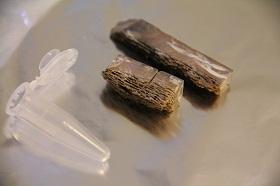Using AI to control energy for indoor agriculture
30 September 2024
Published online 4 October 2011

Fragile molecules of DNA are prone to damage and can become contaminated by unrelated DNA over time. The standard method to sequence DNA is to first amplify the tiny samples of DNA. However, ancient DNA1, which is extracted from unpreserved DNA samples up to a million years old, is typically difficult to sequence, as it has succumbed to these insults.
An international team of researchers led by Ludovic Orlando at the University of Copenhagen, Denmark, including Khaled Al-Rasheid of King Saud University, Saudi Arabia, reports the first true single molecule sequencing of ancient DNA.
True single molecule sequencing (tSMS) is a state-of-the-art technique that bypasses DNA amplification. It allows for sequencing of a single strand of DNA which makes it faster than standard methods.
Orlando and his colleagues took samples of DNA from a horse bone preserved in permafrost for over 50,000 years, and used tSMS to generate 115.9 megabases long. They published their findings in Genome Research.
The team then employed standard sequencing methods to generate 76.9 megabases from the same samples, and compared the sequences generated by the two techniques.
They confirmed that the standard method can produce reliable sequences from ancient DNA, but obtained a higher yield of sequences with tSMS, because this method is particularly suited to sequencing extremely short fragments.
The researchers made simple modifications of the tSMS protocol that resulted in a three-fold increase in the proportion of horse DNA to contaminating DNA.
Some parts of fossilised bone contain more DNA than others, and after taking several different samples, the team where able to identify DNA rich niches. This could make it easier to extract more ancient DNA from fossilized bones in future studies.
The researchers suggest that combining standard and cutting-edge techniques, each tailored to the properties of an individual sample, will enable the sequencing of ancient DNA samples with unprecedented accuracy.
"We can improve tSMS for ancient DNA even further," says Ludovic, "by taking advantage of enzymatic treatments to access molecules that the current protocol leaves out."
doi:10.1038/nmiddleeast.2011.135
Stay connected: